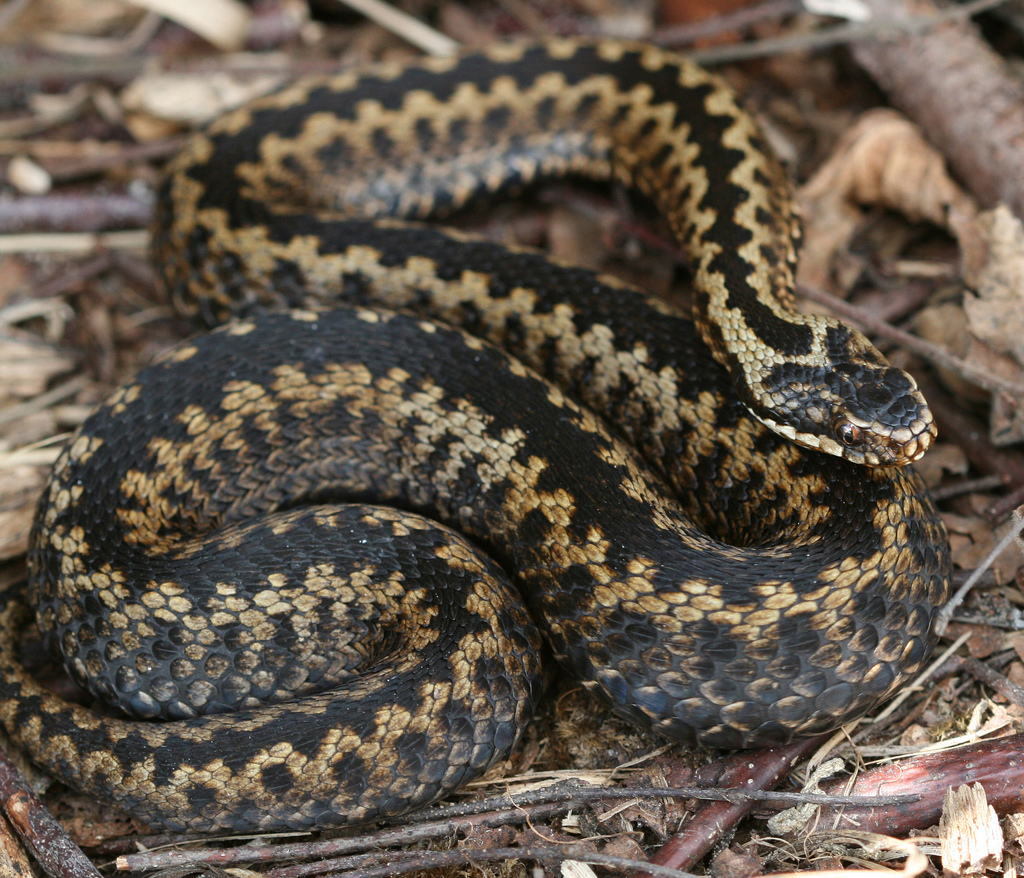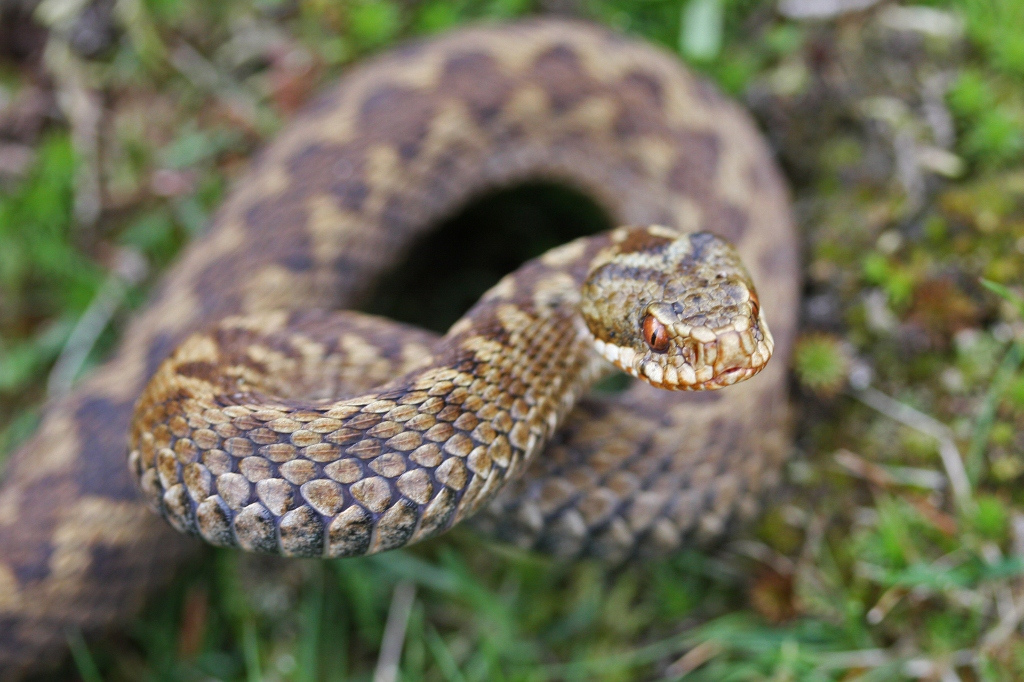Biodiversity
Related Links
Latest News
A Starring Role for Nantclwyd’s Lesser Horseshoe Bats
22.05.2015
Living Landscape Brought Back to Life
05.12.2014
Facebook Page
Adder
The adder is the only venomous snake in the UK. However it is generally shy, timid and not aggressive towards humans.
Description and identification: Adders normally grow to around 65cm in length. They have variable colouration, with males usually being grey, pale yellow or cream with dark markings, and females being brown or reddish with brown markings. Juveniles of both sexes are reddish. Most individuals have a zigzag pattern along their back. The eye is reddish and the pupil is vertical. The adder is most likely to be confused with the grass snake, but can be distinguished by the zigzag pattern and the absence of the black and yellow “collar” grass snakes have behind the head.

Habitat: The adder is quite picky in its choice of habitat. It requires dry open sunny areas adjacent to areas of dense vegetation for cover. It may be found in heathland, moorland, grassland, coastal sites, woodland edges and some former industrial sites, typically on light sandy or chalky soils.
Diet: The main prey items are small mammals such as voles. Lizards, bird chicks and frogs are also taken. When hunting, an adder strikes its prey with its fangs, injecting venom. It then releases the animal, and follows the scent trail to find it dead or dying, swallowing it whole.
Ecology and reproduction: Adders emerge from hibernation in February or March and spend the first few weeks basking. After shedding their old skins, the males become more active and compete with each other for females in a ritualised “dance”. The adults don’t feed until after mating, instead living on fat reserves. Females give birth to between three and 18 live young in August or September. It takes three or four years for the young snakes to reach maturity. In the winter adders hibernate in tree root systems or crevices, especially on south-facing slopes. Whilst adders are mainly active during the day, in particularly hot weather they may also be active at night. Adders have been known to occasionally bite humans if disturbed or deliberately provoked, but whilst painful the bite is very rarely fatal.
Distribution: Adders can be found in parts of Europe, Russia and Asia. They are found across Britain, but their distribution is patchy. In Denbighshire they are found where suitable habitat exists, such as in the Clwydian Range, Clocaenog Forest and Hiraethog.
Threats: The main threats facing adders include habitat loss and degradation, disturbance by people and dogs, and occasional deliberate killing – even though this is illegal.
Status: This species is protected under UK law and is a priority for conservation action at a UK, Wales and Denbighshire level.




